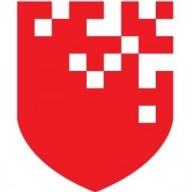


RedSeal and Microsoft Defender Vulnerability Management compete in cybersecurity, focusing on vulnerability management. Microsoft Defender appears to have the upper hand due to its integration with Microsoft's ecosystem and feature-rich environment.
Features: RedSeal provides comprehensive network visibility, risk management, and the ability to understand network structures through detailed visualization. Its network topology insights are crucial in enhancing security posture. Microsoft Defender offers advanced threat detection, seamless integration with the Microsoft ecosystem, and comprehensive reporting capabilities which provide a holistic approach to vulnerability management.
Room for Improvement: RedSeal could enhance its threat intelligence capabilities and improve integration with other security tools. It might also benefit from more user-friendly reporting and dashboards. Microsoft Defender could improve by offering more flexible licensing options, expanding its external network visibility, and enhancing user training resources.
Ease of Deployment and Customer Service: Microsoft Defender benefits from streamlined deployment within the Microsoft ecosystem and aligns its customer service with Microsoft's high standards, ensuring robust support. RedSeal requires a more thorough network analysis for deployment, potentially increasing setup time, but provides tailored support options that cater to unique customer needs.
Pricing and ROI: RedSeal involves higher upfront costs due to its network-centric tools, promising ROI through improved network optimization and risk reduction. Microsoft Defender's pricing reflects its comprehensive feature set and may offer better integration value within Microsoft's offerings, justifying the investment through its focus on threat management and integration capabilities.



| Company Size | Count |
|---|---|
| Small Business | 8 |
| Midsize Enterprise | 2 |
| Large Enterprise | 5 |
| Company Size | Count |
|---|---|
| Small Business | 1 |
| Midsize Enterprise | 1 |
| Large Enterprise | 7 |
Zafran Security integrates with existing security tools to identify and mitigate vulnerabilities effectively, proving that most critical vulnerabilities are not exploitable, optimizing threat management.
Zafran Security introduces an innovative operating model for managing security threats and vulnerabilities. By leveraging the threat exposure management platform, it pinpoints and prioritizes exploitable vulnerabilities, reducing risk through immediate remediation. This platform enhances your hybrid cloud security by normalizing vulnerability signals and integrating specific IT context data, such as CVE runtime presence and internet asset reachability, into its analysis. No longer reliant on patch windows, Zafran Security allows you to manage risks actively.
What are the key features of Zafran Security?
What benefits can users expect from Zafran Security?
In industries where security is paramount, such as finance and healthcare, Zafran Security provides invaluable protection by ensuring that only exploitable vulnerabilities are addressed. It allows entities to maintain robust security measures while allocating resources efficiently, fitting seamlessly into existing security strategies.
Microsoft Defender Vulnerability Management enables organizations to identify vulnerabilities, manage patches, and fortify threat detection. It offers endpoint assessments, cloud incident management, and dynamic security through Microsoft's Security Scorecard integration.
Organizations leverage Microsoft Defender Vulnerability Management for advanced threat detection and response. It provides robust tools for vulnerability assessment and cloud incident management, integrated with Microsoft's Security Scorecard to enhance dynamic security profiling. Key features include automatic patch deployment, security configuration management, and seamless integration with Microsoft platforms, benefiting both on-prem and cloud environments. Organizations can track vulnerabilities with severity-based reports, helping manage outdated software and minimizing threat exposure.
What are the key features of Microsoft Defender Vulnerability Management?In healthcare, Microsoft Defender Vulnerability Management helps manage compliance with health regulations, while in finance, it aids in securing sensitive data from cyber threats. Manufacturing sectors benefit from its patch management, keeping operational technology systems less vulnerable to disruptions.
RedSeal’s network modeling and risk scoring platform builds an accurate, up-to-date model of an organization’s entire, as-built network to visualize access paths, prioritize what to fix, so you can target existing cybersecurity resources to protect your most valuable assets. With RedSeal’s Digital Resilience Score, decision makers can see the security status and benchmark progress toward digital resilience.
We monitor all Risk-Based Vulnerability Management reviews to prevent fraudulent reviews and keep review quality high. We do not post reviews by company employees or direct competitors. We validate each review for authenticity via cross-reference with LinkedIn, and personal follow-up with the reviewer when necessary.